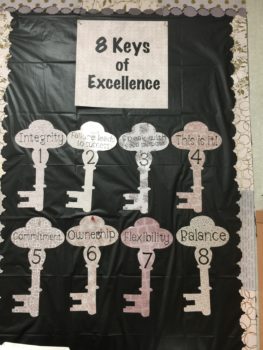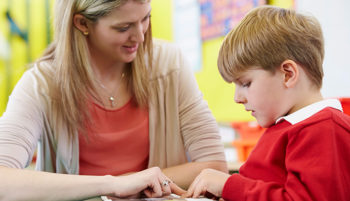Get Support for Your Child at School
 Get Support for Your Child at School
Get Support for Your Child at School
Many schools these days share that they are a “PBIS school” or that they “Use the MTSS framework” for student support. The use of these acronyms may leave some parents feeling lost or unsure about the programs that are in place for their children at school. It’s important to know and understand the systems your child’s school uses so you can be informed when you are asking for support.
MTSS, a commonly used system for addressing student behavior and needs, stands for Multi-Tiered Systems of Support. In this framework, efforts to support students are divided into three categories: Tier 1 (universal supports), Tier 2 (group supports), and Tier 3 (targeted interventions). A breakdown of these tiers is provided below:
Tier 1: Universal Supports
These are supports and expectations that are in place for all students. One of the basic elements of this tier is having a set of clear expectations for all students that are taught and enforced in all areas of the school. Many schools use a set of expectations like, “Be safe, be responsible, and be respectful.” These are recommended expectations because they are easy to understand and most student work and/or behaviors would fall into these three categories if they need to be addressed. Schools also have explanations and examples of what meeting these expectations would look like in all areas of the school, including classrooms, walkways, and the cafeteria. Tier 1 supports may also include a school token economy or rewards system, and there may be a set of both positive and negative consequences for meeting (or not meeting) these expectations. Approximately 80-85% of students will be successful with just tier 1 level supports and interventions.
Tier 2: Group Support and Interventions
These supports will be necessary for 10-15% of the school population. For these students, they have a specific need that is not addressed by tier 1 supports, but it is still a need that at least a small group of students may have. For example, there may be a group of students who are bullying others or a group of students who are frequently absent from school. These students may be referred for group therapy, additional check-ins with a staff member, or they may be referred for after-school tutoring or a club.
Tier 3: Targeted Interventions and Supports
Tier 3 supports should only be necessary for approximately 5% of the population. These students need more targeted services and supports than most general education students, and school-based teams can work with families to determine which interventions are needed. For example, a student may have extreme anxiety, may be far behind academically, or they may have a need for individual counseling or therapy. Whatever the need, tier 3 interventions are typically unique and targeted to the specific needs of individual students. To be clear, not every need will require tier 3 supports; these interventions are reserved for more serious and urgent student needs.
If you believe your child needs support, make sure you go to the school and advocate for your child. Schools have systems, partnerships, and staff in place to bring these needs to the right people at the school so your child can get the support they need. Using this information about typical supports at a school will help you have a great conversation with the staff at the school to help find the right support for you and your family.
 Teaching Our Kids Character Habits That Last a Lifetime (Part 3)
Teaching Our Kids Character Habits That Last a Lifetime (Part 3) Teaching our Kids Character Habits That Last a Lifetime (Part 2)
Teaching our Kids Character Habits That Last a Lifetime (Part 2) Teaching Our Kids Character Habits That Last a Lifetime (Part 1)
Teaching Our Kids Character Habits That Last a Lifetime (Part 1) Teaching Our Children Executive Functioning Skills
Teaching Our Children Executive Functioning Skills